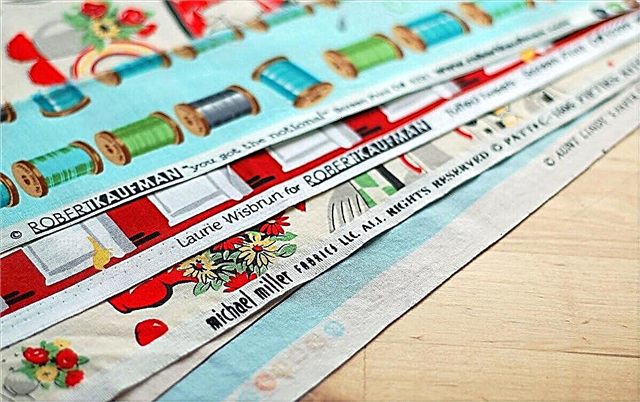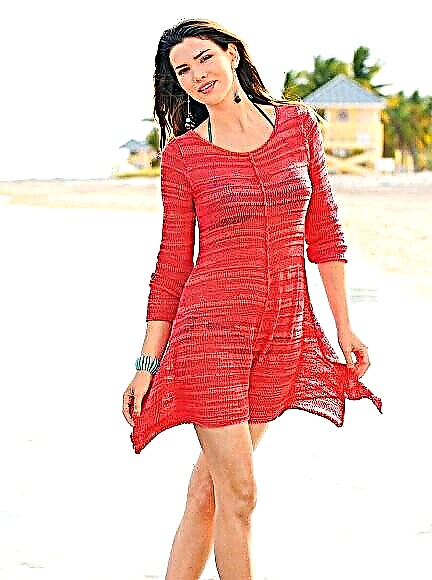The warp thread is one of the most basic sewing concepts, but the final look of your product directly depends on it.

About what a shared thread and a duck thread are told at the very first lessons of labor at school, and for good reason! Depends on the shared thread how the item you sewn will look like. If during cutting you neglect the direction of the shared one, the finished product can be skewed, and in the process of wearing it will stretch and finally lose its shape.
For starters: 18 sewing terms you need to know
Fortunately, avoiding unpleasant consequences is not so difficult, the main thing is to understand the terminology and several nuances.
What is a shared thread?

So, shared thread - This is the warp thread going in the direction of the loom. Precisely because it goes along the length of the canvas, it is called shared.
Edge this refers to a strong edge of the canvas fixed in a special textile way.
Thread duck - This is a thread perpendicular to the base, and their intersection makes up the basic structure of the fabric.
How to learn to sew: tips for beginners
How to identify a shared thread?

Method 1 The simplest and most obvious method for determining the shared thread works in most cases: since we know that the shared thread is parallel to the edge, no difficulties will arise if your fabric has an edge.
But it often happens that the edge is already cut off, and then you have to use other, more complex ways.
Method 2 This method requires some experience, because, despite its apparent simplicity, you will need a trained eye.
All non-knitted fabrics stretch a little along the weft thread and are weakly or completely inelastic along the weft. Take the fabric with the cut edge and pull it in different directions: where it stretches, there will be a weft thread, and where it does not, it will be shared. Keep in mind: best of all, the fabric will stretch along an oblique, that is, at an angle of 45 degrees to the warp and weft threads, but at the same time you will notice some deformation of the canvas.

Why is this method not as simple as it seems? There are times when an inexperienced craftswoman thinks that the fabric stretches, no matter how you turn it. If in doubt, you should use additional methods.
Method 3 With a sharp, but not strong movement, stretch the fabric - along the lobar you will hear a characteristic sonorous clap. In the duck the sound will be weaker and more muffled.
Method 4 If you are still not sure, try to look at the fabric in the light: shared threads are always smoother and more even than weft threads.
Designing for Beginners: Building a Straight Skirt
Further methods work only in special cases, since they depend on the composition of the fabric!
Method 5 If you know that the fabric consists of cotton and woolen threads, then you can be sure that the cotton threads will be shared and the weft threads will be woolen.
Method 6 If your fabric consists of cotton threads and threads made of natural silk, silk will play the role of shared, and cotton - weft.
How to identify a shared thread in a knitted fabric?
The presence of an edge again removes the question, but if it is not there, then the stretchability of the fabric will not help you much, although it is believed that in knitwear the share will stretch the least. You can also use the following tips.

Method 1. Upon closer inspection, you will see that the knitted fabric consists of looped posts and rows. The direction of the columns corresponds to the direction of the shared thread, the rows correspond to the weft thread.
Method 2 Some types of knitted fabrics are rolled up along the edge. Since the shared material is level, this feature will help you determine it.
How to sew a hole on a knitwear: 7 different ways to repair different holes
Fractional thread and cutting

When cutting, the direction of the shared thread of the fabric is extremely important. The direction arrow of the shared thread on the paper pattern must strictly correspond to the direction of the thread of the warp of the fabric (looped column of knitted fabric).
Accordingly, if your fabric has an edge, the details of the pattern should be positioned so that the direction arrow of the shared thread is parallel to it.
How to work with Burda pattern in PDF format
Photo: pinterest



